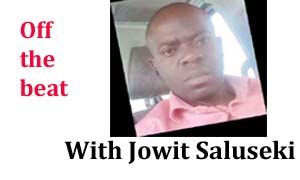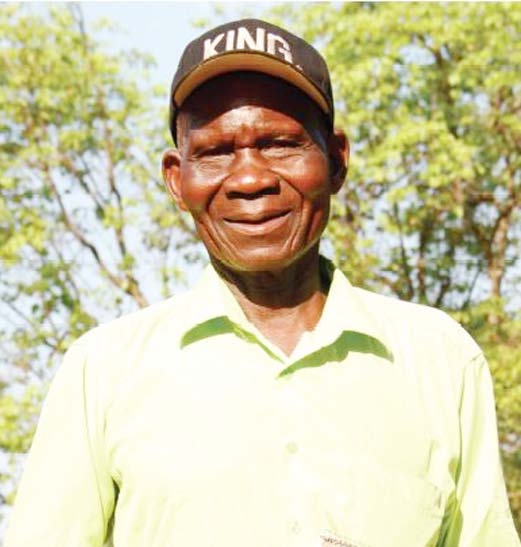ZAMBIA is heralded as a peaceful country, but the period between 1970s and 1980s, witnessed one of the darkest days of an insurgence orchestrated by rebel leader Adamson Mushala, who was gunned down on November 26, 1982.
Zambia is next month set to celebrate her 60th Independence anniversary having attained self-rule from Britain on October 24, 1964.
The Diamond jubilee celebration is ably themed: “60 Years Strong: Honouring our heritage, embracing the future”.
Although most people seem to be aware of Mushala’s rise and fall, very few people know that his former right hand man, Alexander Ndandu Sayimbwende, is still alive in one of the corners of the country.
September 25, 1990 will go down memory lane as the day on which former-rebel leader Sayimbwende finally surrendered to authorities.
His surrender came 11 days after the announcement of his impending give up was discussed on September 14.
Sayimbwende was one of the most feared rebels in Zambia, second in command only to Mushala, leader of an armed rebellion that revolted against the Kenneth Kaunda rule.
The former rebel leader with his trademark baseball cap currently resides in Sayimbwende Village, a stone throw away from Mundwiji Bridge in Mwinilung’a District of North-Western Province.
The year 2024 and the month of September to be precise, marks 34 years to the date when Sayimbwende surrendered himself to authorities, after reigning terror purportedly against former President Kaunda’s one party rule.
Together with Mushala, they recruited insurgents who committed atrocities leaving many people dead and goods looted during the 15 years of mayhem.
But the question readers to this column may want to ask is: Who is Sayimbwende?
Well, now aged 75, Sayimbwende was born in 1948 in Sayimbwende Village of chief Kanyama’s area in Mwinilung’a District.w
His village is located about 35 kilometres from the Mwinilung’a central business district but less than 20 kilometres off the Mwinilung’a-Solwezi Road in Mundwiji area of chief Kanyama.
Married with two wives who have given him 16 children and a number of grandchildren, Sayimbwende looks deceivingly innocent, but he led a rebellious life of terror for 15 years under Mushala’s command.
Before becoming a rebel, Sayimbwende was a promising young sportsman who once dreamt of one day becoming successful in life.
“I started school at Kapundu Primary School in 1965 in chief Kanyama’s area in Mwinilung’a District. Later, I got a transfer to pursue my education at Samuteba Primary School in the same district. However, in 1972, I failed to make it to Grade Eight which was then referred to as Form One,” Sayimbwende says.
As a Grade Seven drop out, young Sayimbwende searched around for jobs until he secured one as a bar manager for William Malenji, a local tycoon who had businesses in North-Western province.
He would later quit the job in search of greener pastures.
On the Copperbelt, Sayimbwende was employed as storekeeper in Ndola’s Northrise Township, where he worked from 1972 to 1976.
His insatiable love for higher education haunted him until he enrolled for evening classes but discontinued due to ill health.
Around 1976, he moved to Kitwe where he did some manual jobs, while he searched for his cousin who was a charcoal burner residing in the Luano area, a place located between Kitwe and Chingola towns.
As was the case in the UNIP Government that ruled Zambia then, it was mandatory for any traveller to carry a Green National Registration Card (NRC).
Armed with his NRC, and while still residing on the Copperbelt, Sayimbwende left for Luano from Chambeshi’s Mine Township and halfway to Luano, he claims that he met a group of armed men.
Unknown to him, this was the group he was to serve with commitment for 15 years.
He was stopped and the leader of the rebel group identified himself as Adamson Mushala.
According to Sayimbwende, who was second in a rebel hierarchy, Mushala was a leader of guerilla warfare whose aim was to allegedly fight the one party system of government he abhorred.
He says the one party state was seemingly not appreciated by some sections of the society and a revolt by Mushala was then staged against President Kaunda’s UNIP government.
The signing of the 1973 Choma Declaration seemingly annoyed some politicians and this paved the way for rebel leader Mushala and a number of his men to leave for South Africa and Namibia for asylum, after his return from China where he had gone for military training.
When he broke ranks with his comrades in UNIP, Mushala became the United Progressive party national secretary in 1968.
Not knowing his destination or his fate, Sayimbwende says he was forcefully recruited and taken to the Democratic Supreme Council (DSC) and his paraphernalia was taken away from him and was threatened with the decimation of his own relatives in Mwinilung’a.
Later his NRC was burnt to ashes and the group then marched to Impeti near Mimbulafitula where they camped for two nights before resuming their journey near the newly created Mushindamo district in North-Western, where the Mushala group clashed with a platoon of paramilitary police sent to intercept them.
In the exchange of fire, one of the rebels called Yotham Chimwang’a was wounded on January 11, 1977.
The first clash Sayimbwende encountered with the Zambia Army soldiers was on August 13, 1977 in Munsoweji area.
For more than eight months before his capture, Sayimbwende and others never received basic training in guerilla tactics.
‘‘The guerillas could sometimes number up to 500 and sometimes a good number of them could surrender and the number would dwindle to only 50. In terms of food, well-wishers used to give us food. Hence, we never had any shortage,’’ Sayimbwende recalls.
To literature lovers, late author Patrick Mutondu Weli in his book “Kaunda and Mushala Rebellion: The Untold Story” unravels the mayhem in which Sayimbwende was an accomplice.
Surprisingly during an interview with this writer, Sayimbwende dodged mentioning how many innocent people were killed during the Mushala rebellion and the looting that characterised the mutiny.
He claimed that some people who wanted the One party state used to alert the security wings about the guerilla group’s whereabouts and also alleged that the ‘majority’ of the people in areas of Copperbelt and North- Western provinces supported their cause.
After losing most of his staunch members of his rebel group around June 1981, Mushala mounted a massive recruitment campaign in places such as his homestead of Mufumbwe and Kasempa districts and the surrounding areas of Mwinilung’a, and Mushindamo.
However, on November 26, 1982, Mushala who was the leader of the DCS was gunned down by security forces.
Despite his body being paraded for the public to have a glimpse of his corpse, mystery still surrounds where Mushala’s remains were exactly buried.
With the death of Mushala, the second in command, who was none other than Sayimbwende himself, took over as the leader of the guerilla group.
However, around the month of May 1987, his leadership began to be questioned and a wrangle erupted developing in the formation of parallel camps.
In 1990, President Kaunda asked Sayimbwende to surrender as his perceived call for ‘democracy’ he claimed to be fighting for was what everyone wanted.
At first, Sayimbwende doubted the news of the amnesty, but the information became more pronounced when in July 1990, Alexander Kamalando, who was a Member of the Central Committee (MCC) for North-Western Province, addressed a meeting at Chief Mwinyilamba’s palace in Mwinilung’a.
Mr Kamalondo urged those in attendance to communicate with Sayimbwende about the pardon.
Later then Prime Minister Malimba Masheke repeated the appeal during his tour of Mwinilung’a in August 1990.
On September 14, 1990, Sayimbwende together with his household left Muminini camp to hand himself over and on September 18, 1990, he was given a letter written by late chief Kanyama Samatemba urging him to surrender.
By then, Sayimbwende had already changed the name of the DCS to Democratic Revolution Movement.
Finally, on September 25, 1990, Sayimbwende secretly surrendered himself to Mr Kamalondo who was the MCC for North-Western Province.
Within a short time, an arrangement was mooted to have Sayimbwende flown to meet former President Kaunda at State House in Lusaka.
The amnesty brought hope and salvation to many although to date, some aggrieved people don’t shy away from bringing to light the horrors and atrocities their friends and families suffered at the hands of Mushala and Sayimbwende.
While yesteryear’s horror and terror perpetuated by the rebels is too difficult to forget, Sayimbwende has an important message for all Zambians.
‘‘For the past 60 years of self-rule, we have never had any wars but just mere rebellions … We have seen how some of our neighbours have been ravaged with wars and insecurities.
As such, I am appealing to politicians to value peace because we need to continue living in harmony even in many years to come,”
“Those in political leadership should be in the forefront of fostering unity, peace, love and co-existence because it’s like in a family. If the parents are always fighting each other and there is no love, the children are the ones who will be affected,” Sayimbwende said while falling short to account for his own wrongs.
As a way of unofficial reconciliation, Chief Kanyamaorganises a Christian festival called ChidikaChanvula or the rain festival annually on October 10.
This is an occasion in which people from all walks of life congregate to forgive each other for their past sins committed while at the same time looking up to God for better rains.
Meanwhile, in his spare time, Sayimbwende, who at one time refused to be accommodated in Lusaka, owing to personal reasons, often becomes part of Mwinilung’a Radio Station’s furniture, giving counsel on various community and national matters.








